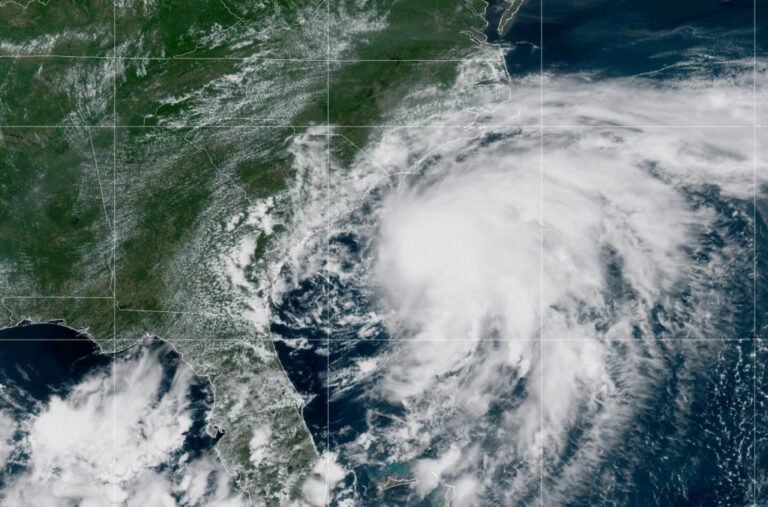Remnants of Chantal Trigger 1,000-Year Rainfall Event Across Parts of North Carolina
NORTH CAROLINA — A historic rainfall event has drenched portions of central North Carolina, including Durham, Chapel Hill, and surrounding communities, after the remnants of Tropical Storm Chantal unleashed nearly a foot of rain in a matter of hours. The event has been classified as a 500- to 1,000-year flood, according to meteorological recurrence models.
The deluge has brought widespread flash flooding, road closures, and overwhelmed infrastructure, particularly in Orange, Durham, and parts of Wake County.
Map Shows Unprecedented Rainfall Return Period
A meteorological map shared online shows vast swaths of central North Carolina — especially near Durham and Chapel Hill — colored in deep magenta and red, indicating extremely rare rainfall events with return periods of 500 to 1,000 years.
These recurrence intervals reflect the statistical rarity of this level of rainfall in a given year, meaning such a storm has just a 0.1% to 0.2% chance of occurring annually in those areas.
Nearly a Foot of Rainfall in Hours
Preliminary estimates suggest some locations received 10–12 inches of rain in under 24 hours as the remnants of Chantal stalled and wrung out moisture over the region. Localized flooding reports have come from:
-
Residential neighborhoods in Chapel Hill and Carrboro
-
Sections of Durham near low-lying creeks
-
Rural roads across Chatham and Alamance Counties
Many residents have taken to social media to report flooded basements, submerged roads, and stranded vehicles. Emergency crews across the region have been responding to water rescues and issuing flash flood warnings.
Remnants of Chantal Stun Meteorologists
While Chantal was no longer a tropical storm by the time it reached inland North Carolina, its moisture-laden remnants interacted with a stalled frontal boundary, creating conditions ripe for training thunderstorms — a phenomenon where storms repeatedly move over the same areas.
“This kind of rainfall is beyond what most urban infrastructure can handle,” said one meteorologist. “Even areas that were built to handle 100-year storms were underwater.”
Infrastructure and Emergency Response Strained
Local officials have activated emergency operations centers and advised residents to avoid all unnecessary travel. In Chapel Hill, several schools and municipal buildings delayed opening due to impassable roadways.
Crews are also monitoring dam integrity and stormwater retention basins, as many are at or near capacity.
Climate Experts Warn of More to Come
Climate scientists note that extreme rainfall events are becoming more frequent, fueled in part by a warming atmosphere that can hold more moisture. Events once considered “1,000-year floods” may become more common in future decades if trends continue.
As cleanup efforts begin, the storm is serving as another stark reminder of the need for modernized drainage systems and resilient infrastructure.
Were you impacted by this extraordinary rainfall in North Carolina? Share your experience in the comments at SaludaStandard-Sentinel.com — we want to hear how your community is recovering.







